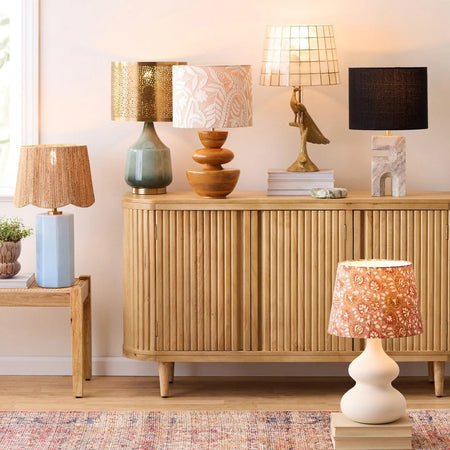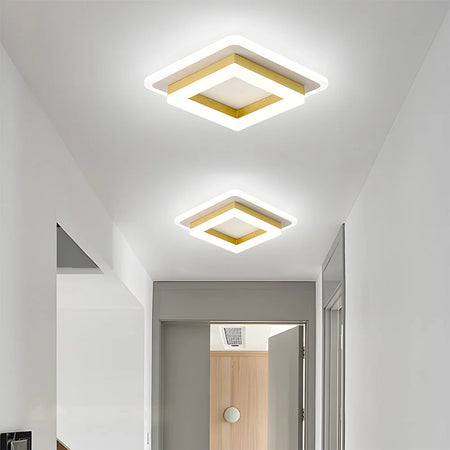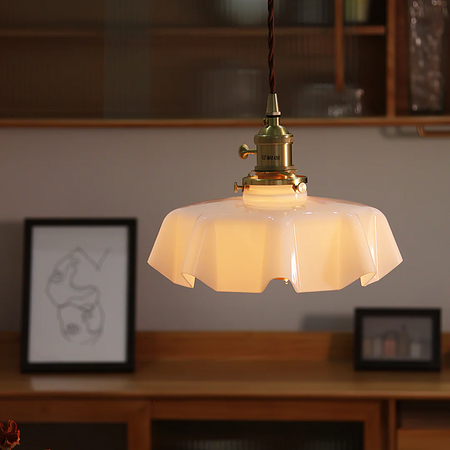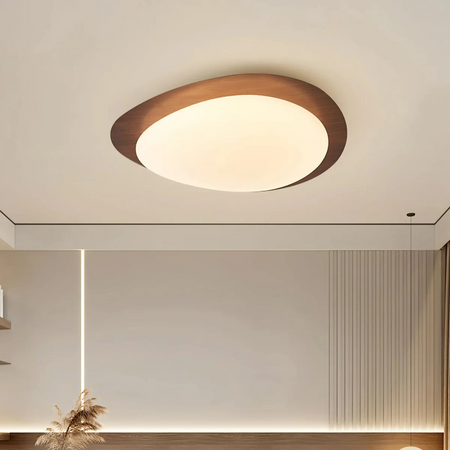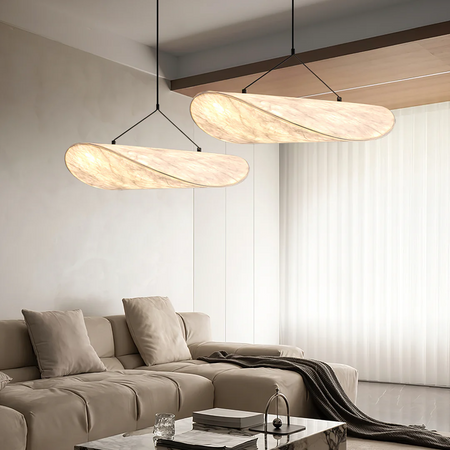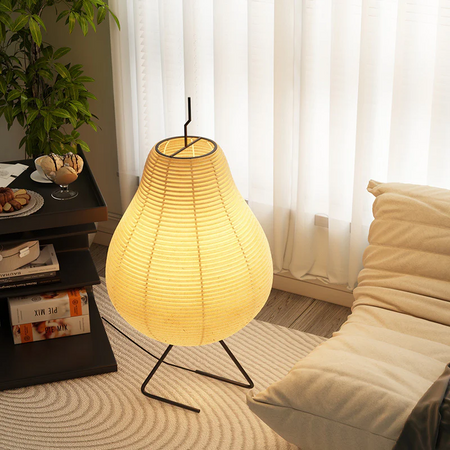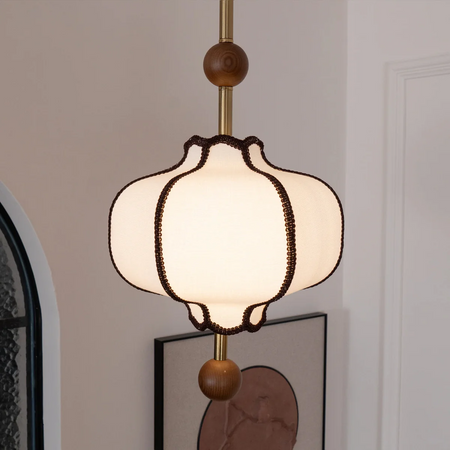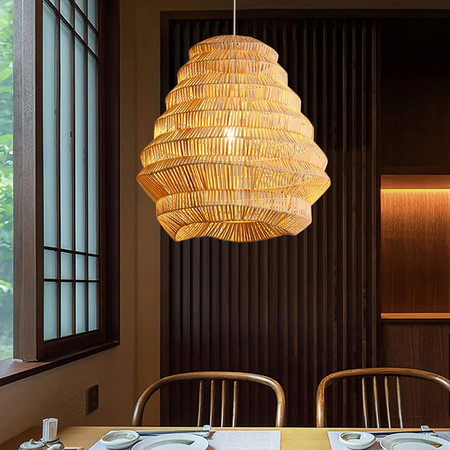Vilket är bättre, 40 watt eller 60 watt för en lampa?
24 oktober 2025 – Peyton stella Allison
Du kanske undrar vilken som är bäst, 40 watt eller 60 watt för en lampa. Svaret beror på vad du behöver från din lampa. Om du vill ha mer ljusstyrka ger en 60 watts glödlampa dig vanligtvis mer ljus. Om du föredrar ett mjukare sken eller vill spara energi kan en 40 watts glödlampa fungera bäst. Några viktiga saker att tänka på inkluderar:
- De faktisk ljusstyrka, eller lumen, du vill ha för ditt utrymme.
- Storleken och användningen av ditt rum.
- Din egen smak i belysningsstil.
- Typen av glödlampa, eftersom LED-lampor kan ge dig mer ljus med mindre effekt.
Kontrollera alltid lampans etikett för att se till att du använder en säker effekt.
Viktiga slutsatser
- En 60-watts glödlampa ger mer ljus. Den är bra för att läsa eller arbeta i stora rum. En 40-watts glödlampa ger ett mjukare ljus. Den är utmärkt för att göra små rum mysiga. Titta alltid på din lampas effektgräns. Detta hjälper till att förhindra överhettning och brandrisker. Försök att använda LED-glödlampor för att spara energi. De lyser lika starkt som 60-watts glödlampor men använder bara 9 watt. Titta på lumen, inte bara wattal, för att välja den bästa glödlampan för dina behov.
Vilken är bättre för ljusstyrka?
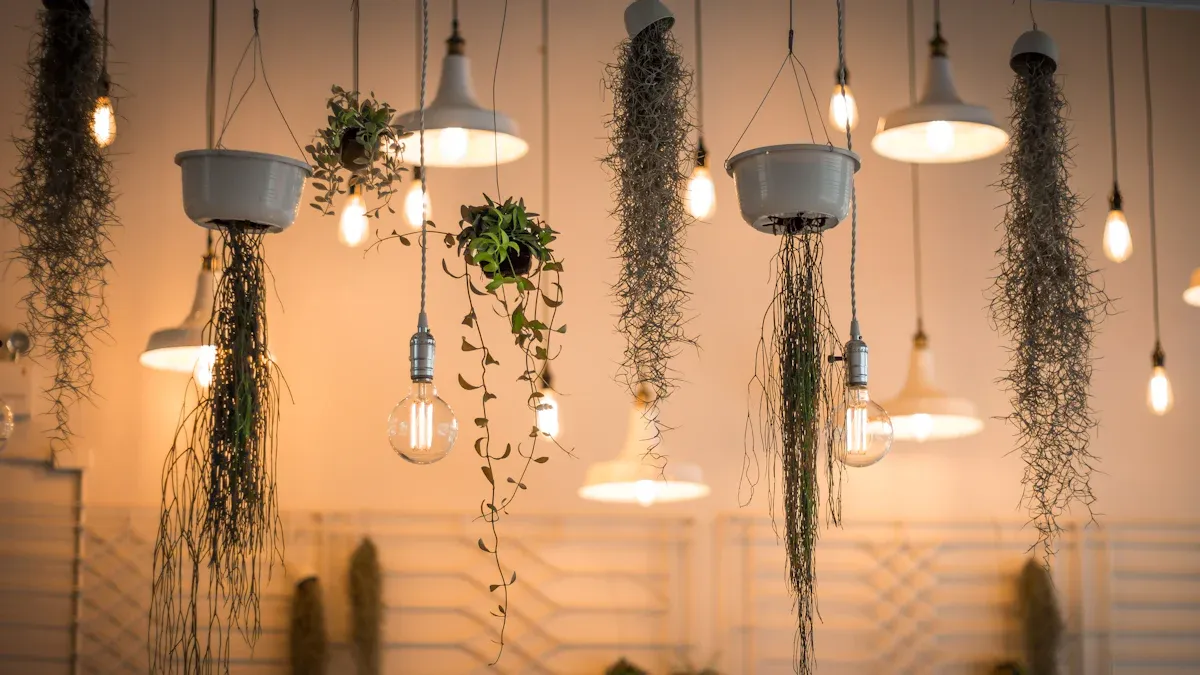
Ljusflöde
När du tittar på en lampa vill du förmodligen veta hur mycket ljus den avger. Wattstyrkan visar hur mycket energi glödlampan använder, men det som verkligen spelar roll för ljusstyrkan är lumen. Lumen mäter det faktiska ljus du ser. En 40 watts glödlampa ger dig vanligtvis ungefär 400 till 500 lumenEn 60-watts glödlampa kan ge upp till 800 lumen. Det betyder att en 60-watts glödlampa lyser nästan dubbelt så starkt som en 40-watts glödlampa.
Här är en snabb jämförelse som hjälper dig att se skillnaden:
| Glödlampstyp | Wattal | Lumenutgång | Atmosfärseffekt |
|---|---|---|---|
| 40-watt | 40 | 400 till 500 | Mysig och inbjudande atmosfär |
| 60-watt | 60 | 800 | Starkare belysning, lämplig för uppgifter eller större utrymmen |
Om du vill lysa upp ett stort rum eller behöver se tydligt kan du välja 60-wattslampan. Om du bara vill ha ett mjukt sken fungerar 40-wattslampan bra. Så, vilket är bättre för ljusstyrka60-wattslampan vinner om du vill ha mer ljus.
Bäst för läsning eller atmosfär
Tänk på hur du använder din lampa. Läser du böcker eller gör läxor under den? Eller vill du ha ett mjukt ljus för att koppla av? Om du använder din lampa för att läsa behöver du tillräckligt med ljus så att dina ögon inte blir trötta. En 60-watts glödlampa ger dig ett starkt, klart ljus som gör läsningen lättare. Du slipper kisa eller anstränga ögonen.
Om du vill att ditt rum ska kännas varmt och mysigt är en 40-watts glödlampa ett bra val. Den skapar ett mjukare ljus som känns avkopplande. Många använder 40-watts glödlampor i sovrum eller vardagsrum när de vill ha en lugn stämning.
Här är några tips som hjälper dig att bestämma dig vilket är bättre för dina behov:
- Använd en 60 watts glödlampa för att läsa, studera eller arbeta med pyssel.
- Välj en 40-watts glödlampa för filmkvällar, avkoppling eller när du vill ha ett milt sken.
Du kan fråga dig själv, vilket är bäst för ditt utrymme? Om du behöver ljusstyrka, välj 60 watt. Om du vill ha stämning är 40 watt rätt val.
Tips: Om du vill ha både ljusstyrka och en mysig känsla kan du prova en lampa med dimmer. Du kan justera ljuset efter ditt humör eller din uppgift.
Energianvändning och kostnad
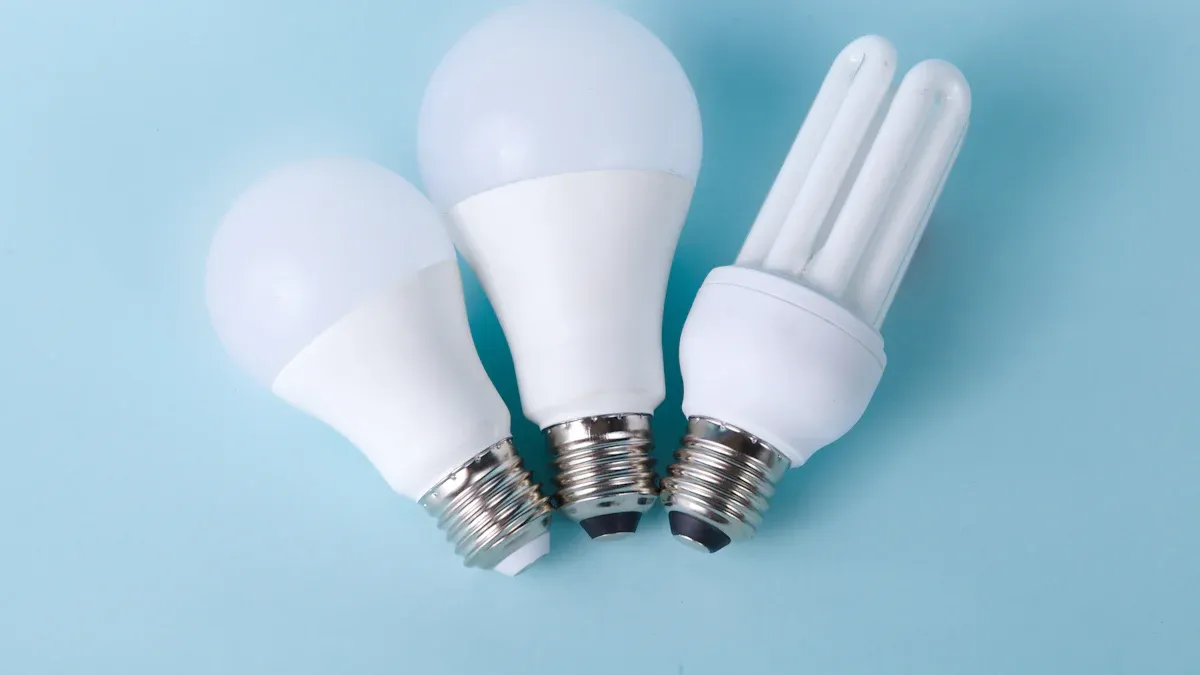
Elförbrukning
När du väljer en glödlampa, du tänker säkert på hur mycket energi den förbrukar.En 40-wattslampa använder mindre el än en 60-wattslampa. Det betyder att om du låter båda lamporna vara tända lika länge, kommer 40-wattslampan att använda mindre ström. Men det finns mer i historien. Du vill också veta hur mycket ljus du får för den energi du använder.
Ta en titt på detta bord:
| Glödlampstyp | Wattal | Ljusflöde (lumen) | Effektivitet (lumen/watt) |
|---|---|---|---|
| 40 watts glödlampa | 40 | 450 | 11.25 |
| 60 watt glödlampa | 60 | 800 | 13.33 |
Du kan se att 60-wattslampan ger dig mer ljus för varje watt energi. Den är lite effektivare, men den förbrukar fortfarande mer el totalt sett. Om du vill spara energi kan du välja 40-wattslampan, särskilt om du inte behöver mycket ljus.
💡 Dricks: LED-lampor använder mycket mindre energi än glödlampor på 40 eller 60 watt. De kan ge samma ljusstyrka samtidigt som de bara använder en bråkdel av strömmen.
Påverkan på räkningar
Din elräkning beror på hur mycket energi du använder. Om du använder en 60-watts glödlampa istället för en 40-watts glödlampa kommer din lampa att förbruka mer el och din räkning kommer att öka lite. Med tiden kan detta bli dyrt, särskilt om du har många lampor i ditt hem.
Här är en snabb titt hur olika glödlampor påverkar energianvändning och miljön:
| Glödlampstyp | Energiförbrukning | Koldioxidutsläpp | Livslängdsjämförelse |
|---|---|---|---|
| 40 watt | Lägre än 60 watt | Lägre utsläpp | Kortare livslängd |
| 60 watt | Högre än 40 watt | Högre utsläpp | Kortare livslängd |
| LED-lampa | 75 % mindre energi | Betydande minskning | Upp till 25 gånger längre |
Att byta till LED-lampor kan spara pengar och hjälpa planeten. Du kommer att använda mindre energi, betala mindre på dina räkningar och byta glödlampor mer sällan.
Notera: Nya statliga regler kräver att glödlampor ska vara mycket effektivareDe flesta traditionella glödlampor uppfyller inte dessa standarder, så du kanske ser fler LED-alternativ i butikerna. LED-lampor är nu det bästa valet för att spara energi och pengar.
Säkerhet och kompatibilitet
Begränsningar för armaturens effekt
Du kanske tror att det alltid är bättre att använda en starkare glödlampa, men din lampan har begränsningar av en anledning. Varje lampa eller armatur har en etikett som anger den maximala wattal du kan använda. Du hittar vanligtvis den här etiketten nära sockeln eller på sockeln. Tillverkare måste inkludera denna information för att följa säkerhetsregler och hjälpa dig att göra rätt val.
| Förordning | Beskrivning |
|---|---|
| Regel för märkning av apparater | Kräver tydlig märkning av energianvändning för lampor. |
| UL-standarder | Kräver en permanent etikett som visar maximal effekt för varje fixtur. |
Om du sätter en 60-watts glödlampa i en lampa som bara är klassad för 40 watt, risk för överhettning av kablarna och uttagetDetta kan göra att lampan blir farligt varm, skadar delarna och till och med kan starta en brand.Många tror att en högre wattal bara betyder mer ljus, men wattal mäter faktiskt energiförbrukning, inte ljusstyrka. Matcha alltid glödlampans wattal med din lampas märkdata för att hålla ditt hem säkert.
⚠️ Dricks: Använd aldrig en glödlampa med högre effekt än vad din armatur tillåter. Det är inte värt risken.
LED-alternativ
LED-lampor gör saker och ting mycket enklare och säkrare. De använder mycket mindre energi för att ge dig samma mängd ljus som gammaldags glödlampor. Till exempel kan en LED-lampa på 5 till 7 watt lysa lika starkt som en glödlampa på 40 watt, och en LED-lampa på 9 watt matchar en glödlampa på 60 watt.
| Glödlampa | LED-lampaekvivalent |
|---|---|
| 40W | 5W–7W |
| 60W | 9W |
Lysdioderna håller sig svala medan de arbetar, till skillnad från glödlampor som blir väldigt varma och kan orsaka brännskador eller bränder. Merparten av energin i en LED-lampa omvandlas till ljus, inte värme. Detta gör LED-lampor mycket säkrare för ditt hem, särskilt om du har barn eller husdjur. Dessutom håller LED-lampor mycket längre och sparar pengar på din elräkning.
💡 Notera: Många byter till LED-lampor för energibesparing, säkerhet och längre livslängd. Du får starkt, högkvalitativt ljus utan att behöva oroa dig för överhettning.
Vilken är bättre för dina behov?
Att välja mellan en 40-watts och en 60-watts glödlampa kan kännas förvirrande. Du vill ha rätt ljus för ditt utrymme, men du bryr dig också om energianvändning och säkerhet. Låt oss gå igenom när varje alternativ fungerar bäst för dig.
När man ska välja 40 watt
En 40-watts glödlampa passar bra i många situationer. Du kan välja den här glödlampan om du vill ha ett mjukare, mer avkopplande ljus. Den fungerar utmärkt i sovrum, vardagsrum eller någon annanstans där du vill ha en mysig känsla. Om du har ett litet rum eller en lampa med en skärm som mjukar upp ljuset, kan en 40-watts glödlampa ge dig precis tillräckligt med ljusstyrka utan att vara hård.
Här är några viktiga faktorer som kan hjälpa dig att avgöra om en 40-watts glödlampa är rätt för dig:
- RumsmåttMindre rum behöver mindre ljus, så en 40 watts glödlampa gör ofta jobbet.
- Typ av glödlampa: Om du använder en LED- eller CFL-lampa kan du få samma mjuka ljus med ännu mindre energi.
- Belysningsbehov: För atmosfär, avkoppling eller TV-tittande skapar en 40-watts glödlampa ett milt sken.
Du bör också tänka på energibesparingar. En 40-watts glödlampa förbrukar mindre el än en 60-watts glödlampa. Om du vill spara pengar på dina räkningar och hjälpa miljön är detta ett smart val. Energieffektiva glödlampor som LED-lampor använder 75 till 80 procent mindre energi än gamla glödlampor. Med tiden kan du spara 60 till 125 dollar per glödlampa bara genom att byta till LED-lampor.
💡 Tips: Om din lampa sitter i en liten eller sluten armatur hjälper en 40-watts glödlampa förhindra överhettningAtt använda en högre wattal i dessa utrymmen kan göra att uttaget smälter eller till och med startar en brand.
När man ska välja 60 watt
Ibland behöver man mer ljus. En 60-watts glödlampa lyser starkare och fungerar bra för uppgifter som kräver tydlig syn. Om du läser, gör läxor eller pysslar vill du ha en glödlampa som lyser upp ditt utrymme. Större rum eller områden med högt i tak drar också nytta av den extra ljusstyrkan.
Du kan välja en 60 watts glödlampa för:
- Takbelysning i vardagsrum eller matsalar
- Ljuskronor som behöver lysa upp ett stort område
- Vägglampetter i hallar eller entréer
- Arbetsbelysning i kök där du lagar mat och hackar den
- Läshörnor där du vill se varje ord tydligt
Ta en titt på hur mycket ljus varje glödlampa ger dig:
| Glödlampstyp | Producerade lumen |
|---|---|
| 40-watt | 450 lm |
| 60-watt | 800 lm |
Om du frågar dig själv, vilken är bäst för att läsa eller arbeta? 60-wattslampan vinner oftast eftersom den ger nästan dubbelt så mycket ljus som 40-wattslampan. Belysningsexperter säger att du bör välja din glödlampa baserat på lumen, inte bara effekt. Detta hjälper dig att få rätt mängd ljus för dina behov och håller ditt utrymme säkert och bekvämt.
"Att välja en glödlampa baserat på lumen snarare än effekt kommer att hjälpa dig att göra rätt val.”
Men kom ihåg att det kan orsaka problem att använda en 60-watts glödlampa i en liten eller sluten armatur. För mycket värme kan skada lampan och till och med starta en brand. Kontrollera alltid lampans etikett för maximal effekt.
Om du vill ha det bästa av två världar – starkt ljus och energibesparingar – prova en LED-lampa. Du kan få samma ljusstyrka som en 60 watts glödlampa med bara 9 watt effekt. LED-lampor håller sig också svala och håller mycket längre.
Snabb checklista som hjälper dig att bestämma dig:
- Välj 40 watt för små rum, mysiga utrymmen eller när du vill spara energi.
- Välj 60 watt för stora rum, arbetsbelysning eller när du behöver extra ljusstyrka.
- Kontrollera alltid din lampas wattgräns.
- För det säkraste och mest effektiva alternativet, välj en LED-lampa.
När du frågar dig själv vilken som är bäst för dina behov, tänk på rummets storlek, vad du gör i utrymmet och hur mycket ljus du vill ha. Rätt val gör att ditt hem känns precis rätt.
När du frågar dig själv vilken som är bäst, tänk på vad du behöver mest. Om du vill ha mer ljusstyrka fungerar en 60-watts glödlampa bra. För energibesparingar och en mysig känsla passar en 40-watts glödlampa bäst. LED-lampor ger dig samma ljus med mindre energi och värme.
- Matcha alltid din glödlampa med lampans wattgräns för att undvika brandrisker.
- Nästan hälften av alla amerikanska hushåll använder nu LED-lampor för den mesta belysningen.
- Leta efter lumen och färgtemperatur, inte bara watt.
Komma ihåg: Överbelysning kan orsaka överhettning och till och med bränderVar försiktig och välj klokt!
Vanliga frågor
Kan jag använda en 60 watts glödlampa i vilken lampa som helst?
Du bör alltid kontrollera lampans etikett. Om det står "Max 40W" ska du inte använda en 60-watts glödlampa. Att använda en högre effekt kan överhetta lampan och orsaka brand.
Fungerar LED-lampor i vanliga lampor?
Ja! Du kan använda LED-lampor i de flesta lampor. Se bara till att sockeln passar. LED-lampor förbrukar mindre energi och håller sig svala, så de är ett säkert val.
Vilken glödlampa är bäst för ögonkomfort?
Om du läser eller arbetar under lampan ger en 60-wattslampa dig mer ljus och hjälper till att minska ögonbelastningen. För avkoppling skapar en 40-wattslampa ett mjukare, mysigare sken.
Kommer en 60 watts glödlampa att kosta mig mycket mer?
En 60-watts glödlampa använder mer el än en 40-watts glödlampa. Med tiden kan detta öka din räkning. Om du vill spara pengar kan du prova en LED-glödlampa istället.







